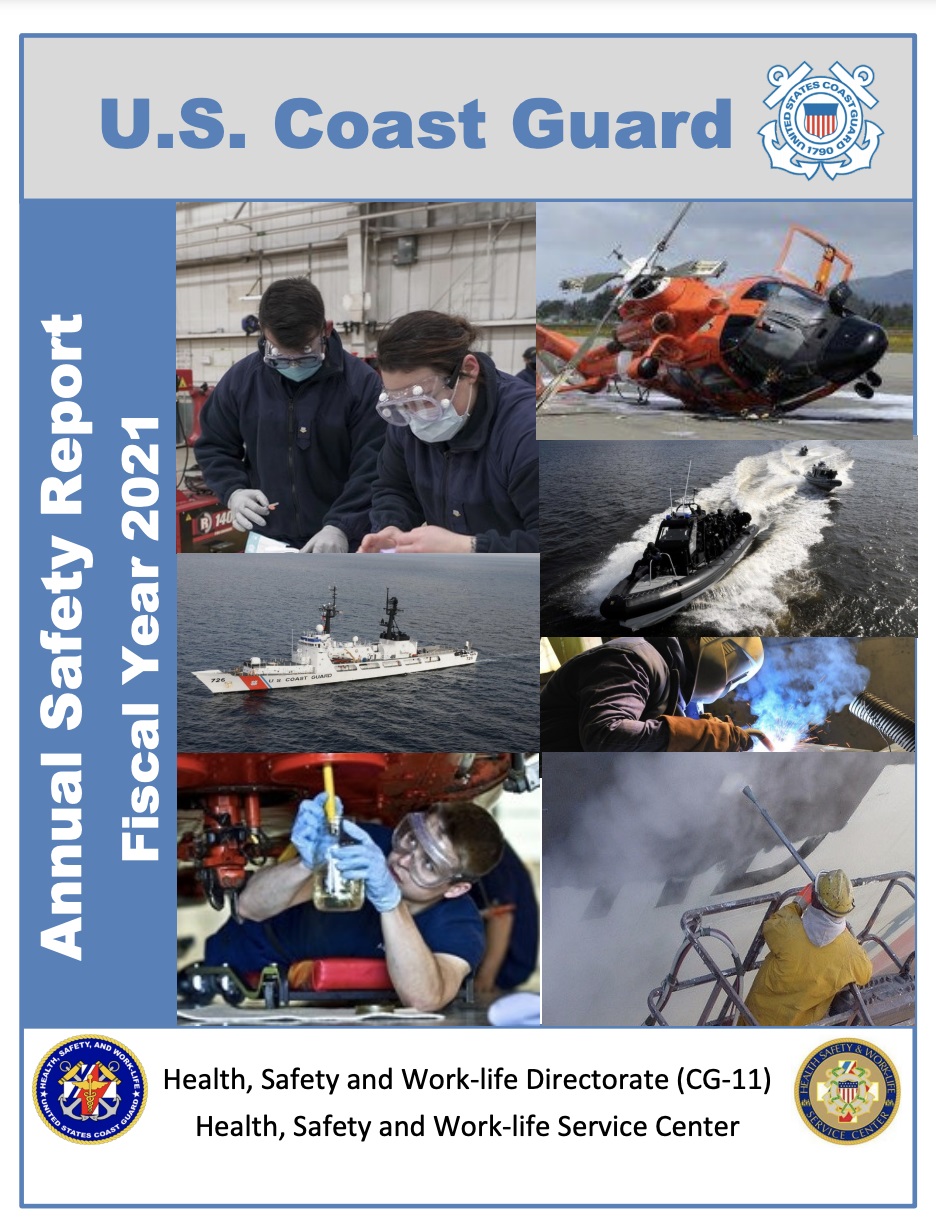Human factors continue to prevail as the leading cause of mishaps in the Coast Guard, although many of these mishaps could have been prevented by correcting known hazards. That is the critical takeaway from this year’s Annual Safety Report (ASR), which was recently released by the Health, Safety and Work-Life (HSWL) directorate.
The Coast Guard experienced 2,249 mishap reports in fiscal year 2021, but less than 50% were associated with operations. Most mishaps occurred off-duty or during recreational activities. In total, mishaps cost the Coast Guard $35.5 million in property damage, $6.7 million in worker’s compensation claims, and resulted in 6,409 lost workdays and 15,987 restricted workdays.
While the Coast Guard has a robust safety audit and assessment capability coordinated through the Health, Safety and Work-Life Service Center (HSWL SC), the ASR reveals the majority of identified hazards are never corrected. In fact, only seven percent of the hazards identified through unit-level assessments, and 40 percent identified through third-party, external audits, are ever corrected.
Rear Adm. Dana Thomas, HSWL director, found these findings troubling. “The Coast Guard has long been recognized for its robust risk management approach and strong safety culture,” she said. “The cornerstone of this reputation is deliberate and proactive assessment activity to identify, assess, and mitigate hazards. However, findings from the ASR reveal that while hazard identification and assessment are robust, mitigation and abatement are wanting.”
She pledged that leadership stands committed to correcting this safety program deficiency and directed HSWL SC and Office of Safety and Environmental Health to develop a comprehensive plan to improve hazard abatement. Capt. Perry Kremer, HSWL SC commanding officer, echoed Thomas’ pledge and added that uncorrected hazards are precursors to mishaps and correction must be a priority.
“To address the issue, we are workin g with area and district Safety and Risk Management (SARM) Councils to explore the problem, educate stakeholders, provide metrics, and keep leadership informed on the hazard mitigation progress,” said Kremer.
g with area and district Safety and Risk Management (SARM) Councils to explore the problem, educate stakeholders, provide metrics, and keep leadership informed on the hazard mitigation progress,” said Kremer.
Recognizing that unit-level safety awareness and training is one of the most often cited hazardous condition in safety audits and assessment, HSWL SC emphasized delivery of on-site and remote safety services throughout FY 21 and converted its assistant safety officer (ASO) course to an e-learning platform, sponsoring 10courses for 230 students to receive training on safety program management.
“Using the best available technology, team members worked with unit safety resources to audit conditions, discuss hazards and controls to reduce risk and simultaneously keep COVID-19 transmission risk low,” said Kremer.
Glenn Gebele, chief of Safety and Environmental Health, summarized the need for everyone to review the ASR because some aspect of work or off-duty hazard exposures will impact you directly, “I encourage you to visit the ASR and links as part of your own safety awareness, deliberate risk management, and mishap prevention efforts.”
Read the ASR on the HSWL SC Safety and Environmental Health Division’s portal page: CG Annual Safety Reports - Annual Report Detail (uscg.mil) for additional insights about your safety environment, consolidated information on mishap exposure, types of losses and consequences, mishap causal factors, and community specific hazards such as cutter, boat, aviation, shore, etc., as well as training resources and safety initiatives. Detailed safety information within each community can be accessed through links in the ASR. This information should be used to target deliberate risk assessments and enhance pre-mission discussion to improve hazard exposure awareness and augment hazard mitigation efforts. The ASR can be a powerful resource for mishap prevention and operational readiness.